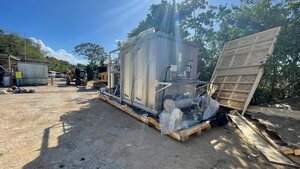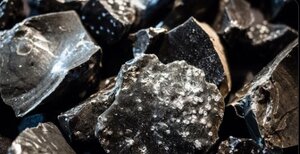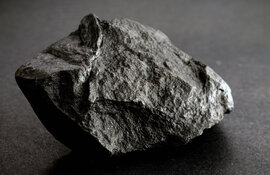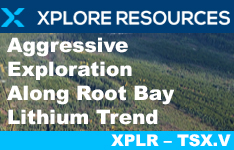Stillwater Critical Minerals Corp. (PGE:TSX.V; PGEZF:OTCQB; J0G:FSE) has announced a collaboration with Lawrence Berkeley National Laboratory to explore the potential for geologic hydrogen production at its flagship Stillwater West Ni-PGE-Cu-Co + Au project in Montana. This partnership is funded by the U.S. Department of Energy through the Advanced Research Projects Agency program (ARPA-E). Berkeley Lab secured US$2 million in funding for the "Cyclic Injection for Commercial Seismic-Safe Geologic H2 Production (CyclicGeoH2)" project, led by Dr. Mengsu Hu. The research will focus on developing technologies for the safe and economical extraction of hydrogen at a commercial scale using rock samples from the Stillwater Igneous Complex. The project will involve laboratory tests, field characterization, and multiscale numerical modeling.
This initiative represents a significant step toward utilizing the unique geological conditions at Stillwater West for hydrogen production, as well as a potential future source of critical minerals, including nickel, cobalt and PGEs. As hydrogen is increasingly recognized as a clean energy source with minimal environmental impact, the collaboration further positions Stillwater to contribute to the global shift toward sustainable energy.
Looking Into The Geologic Hydrogen Sector
The geologic hydrogen sector has emerged as a promising frontier in the clean energy landscape, attracting significant interest due to its potential to revolutionize energy production. Geologic hydrogen, often referred to as "white" or "gold" hydrogen, is naturally occurring and, according to Bruce Nurse, writing for the My Journal Courier on August 5, 2024, "offers a near-zero carbon footprint and 24/7/365 availability, making it a low-cost, low-carbon energy alternative to fossil fuels."
This sector has been described as entering a new "gold rush" era, not for precious metals, but for hydrogen, with the potential to satisfy global demand for centuries. Nurse highlighted that "If even a small fraction of this amount could be recovered, it would be a vital resource and could satisfy the projected global demand of 500 million tons annually for centuries to come."
However, the potential of geologic hydrogen extends beyond just being an energy alternative. It also presents significant opportunities for decarbonization in industries like transportation, agriculture, and steel production. Nurse noted, "Harnessing this clean hydrogen could play a key role in addressing climate change by enabling decarbonization in industries like transportation, agriculture, steel production, and more."
According to Hydrogen Insight in July 2024, natural hydrogen has been positioned as a potential disruptor in the hydrogen market, with some explorers claiming they can produce hydrogen for as little as US$1 per kilogram, undercutting other low-carbon hydrogen sources. The publication also reported that "natural hydrogen could be a disruptor in the H2 market, offering a competitive edge with low production costs compared to other low-carbon hydrogen sources."
Despite its promise, the sector's growth will depend heavily on supportive policy frameworks and subsidies. Hydrogen Insight pointed out that "Natural hydrogen, sometimes called 'white' or 'gold' hydrogen, has the potential to revolutionize the hydrogen market, provided it receives the necessary subsidies and supportive policy framework."
GeoExPro, in June 2024, emphasized that the potential of natural hydrogen has not been fully explored, largely because efforts to locate significant reserves have been limited. However, they expressed optimism, stating, "HydroGenesis believes that natural hydrogen exists in large quantities in the subsurface; we just haven't been looking in the right place. We are developing an exploration concept to pioneer this exciting and world-changing clean energy source."
The exploration of geologic hydrogen is supported by several subsurface processes, such as oxidation, radiolysis, and serpentinization, which are believed to generate substantial quantities of hydrogen. GeoExPro noted, "Oxidation, radiolysis, and thermogenesis in intracratonic basins, as well as serpentinization in ophiolites, present the best opportunities."
As the sector continues to develop, investment will be critical to realizing its full potential. GeoExPro stressed, "Investment dollars are needed, which should be a no-brainer when considering the amount being committed to green and blue hydrogen projects."
Stillwater Critical Minerals Catalysts
The collaboration with Berkeley Lab and the funding from the DOE marks a major milestone for Stillwater Critical Minerals in its efforts to leverage the unique geology of the Stillwater Igneous Complex.
Michael Rowley, President and CEO of Stillwater, highlighted the project's potential, stating in the news release, "We are excited for our Stillwater West project to be selected for this cutting-edge work in the burgeoning field of geologic hydrogen generation." He emphasized the company's vision of securing a domestic supply of critical minerals while potentially generating clean energy in the form of hydrogen.
 Streetwise Ownership Overview*
Streetwise Ownership Overview*
Stillwater Critical Minerals Corp. (PGE:TSX.V; PGEZF:OTCQB; J0G:FSE)
Dr. Carl Steefel, Co-Principal Investigator at Berkeley Lab, also noted the importance of this research, expressing optimism about the potential for larger-scale pilot tests at Stillwater West if initial results are favorable. The potential to produce geologic hydrogen at scale could enhance Stillwater's role in the clean energy sector, adding to its existing reputation for producing critical minerals.
Ownership and Share Structure
Management and insiders own approximately 20% of Stillwater, according to the company.
Executive Chairman and Director Gregory Shawn Johnson owns 2.86%, President and CEO Michael Victor Rowley owns 2.56%, Independent Director Gregor John Hamilton owns 1.65%, Independent Director Gordon L. Toll owns 0.44%, and Vice President of Exploration Daniel F. Grobler owns 0.23%, according to Reuters.
Institutions own approximately 25% of the company, high net-worth investors own about 37%, and Glencore Canada Corp. owns 15.4%. About 18% of the company's shares are in retail, Stillwater said.
There are about 227 million shares outstanding with 174.5 million free float traded shares, while the company has a market cap of CA$36.33 million and trades in a 52-week range of CA$0.13 and CA$0.22.
| Want to be the first to know about interesting Alternative - Biofuels investment ideas? Sign up to receive the FREE Streetwise Reports' newsletter. | Subscribe |
Important Disclosures:
- Stillwater Critical Minerals is a billboard sponsor of Streetwise Reports and pays SWR a monthly sponsorship fee between US$4,000 and US$5,000.
- James Guttman wrote this article for Streetwise Reports LLC and provides services to Streetwise Reports as an employee. \
- This article does not constitute investment advice and is not a solicitation for any investment. Streetwise Reports does not render general or specific investment advice and the information on Streetwise Reports should not be considered a recommendation to buy or sell any security. Each reader is encouraged to consult with his or her personal financial adviser and perform their own comprehensive investment research. By opening this page, each reader accepts and agrees to Streetwise Reports' terms of use and full legal disclaimer. Streetwise Reports does not endorse or recommend the business, products, services or securities of any company.
For additional disclosures, please click here.









































